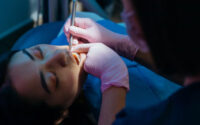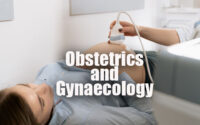Tuberculosis and Respiratory Medicine MCQ
Tuberculosis and Respiratory Medicine MCQ paper for the written examination is given below. Candidates who are looking for Tuberculosis and Respiratory Medicine exam MCQ paper can find in this section. The applied candidates who are getting prepared for the Tuberculosis and Respiratory Medicine can view this page for the Tuberculosis and Respiratory Medicine Last Ten Years MCQ Papers.

Download the Tuberculosis and Respiratory Medicine MCQ & Solutions & make it as a reference for your exam preparation. Take advantage of these Tuberculosis and Respiratory Medicine MCQ Papers in a proper manner to get qualifying Marks. Last 5 years Tuberculosis and Respiratory Medicine MCQ Papers provided here. Candidates who are applied for the above exam can check and download the Tuberculosis and Respiratory Medicine MCQ Papers from here.
MCQ on Tuberculosis and Respiratory Medicine
1. First line of treatment for retained hemothorax is –
(1) Video assisted thoracoscopic surgery
(2) Intrapleural thrombolytic therapy
(3) Thoracic irrigation with 1L of warmed saline
(4) Placement of additional chest tube
2. Positive end Expiratory pressure is most commonly used to correct-
(1) Hypercapnia
(2) Mild Hypoxemia
(3) Refractory Hypoxemia
(4) Respiratory Acidosis
3. All of the following are strategies to reduce Auto PEEP, except –
(1) Reduce tidal volume
(2) Increase frequency
(3) Increase flow rates
(4) Optimum used of bronchodilators
4. Which of the following is not a physiologic Goal of prone positioning?
(1) To increase peak inspiratory & plateau pressures
(2) To improve respiratory mechanics
(3) To reduce intrapulmonary shunting
(4) To reduce ventilator-related lung injury
5. All of the following are commonly observed pulmonary functional abnormalities following upper abdominal surgery, except –
(1) Reduced FEVI/FVC%
(2) Reduced Vital capacity
(3) Reduced functional residual capacity
(4) Reduced Inspiratory capacity
6. As a candidate for pneumonectomy, in the absence of Dyspnea or ILD, no further testing is required to clear for pneumonectomy in all the following situations, except –
(1) Preoperative FEVI & DLCO > 80%
(2) Predicted post pneumonectomy FEVI & DLCO > 40%
(3) Predicated post-operative FEVI& DLCO 30-40%
(4) Predicated post-operative FEVI & DLCO 30% and VO2 max> 15mL/kg/min.
7. Lisch nodules are commonly seen in which organ as a manifestation of Neurofibromatosis?
(1) Eyes
(2) Skin
(3) Lymph nodes
(4) Lungs
8. HMB – 45 staining is highly specific for –
(1) Idiopathic pulmonary fibrosis
(2) Benign metastasizing leiomyoma
(3) Leiomyosarcoma
(4) Lymphangioleiomyomatosis
9. Actigraphy is used to measure all of the following objective sleep health dimensions, except –
(1) Daytime alertness
(2) Regularity
(3) Timing
(4) Efficiency
10. One of the following statement is not true for Epworth Sleepiness Scale –
(1) It is used to identify sleep apnea syndrome.
(2) It is composed of eight common circumstances.
(3) The likelihood of dozing scales from 0 to 3.
(4) A score of 11 or more is often considered diagnostic.
11. Diaphragmatic injuries are –
(1) more common on left side
(2) easily diagnosed on chest radiographs
(3) usually devoid of typical signs of computed radiography
(4) diagnosed clinically by specific signs
12. All of the following statements are true for Myasthenia Gravis, except –
(1) There is moderate reduction in inspiratory and expiratory mouth pressures.
(2) Upper airway obstruction is commonly reported.
(3) Recurrent pneumonia may occur due to aspiration.
(4) Early noninvasive ventilation may reduce intubation rates.
13. All of the following are absolute contraindication to lung transplantation, except –
(1) Colonisation with highly resistant bacteria
(2) Chronic active viral Hepatitis B
(3) Significant chest wall deformity
(4) Active substance addiction
14. Which one of the following measures is used as a last resort for respiratory protection at work place?
(1) Substitution
(2) Personal protective equipment
(3) Engineering control
(4) Elimination
15. The correct statement for veno-venous extracorporeal membrane oxygenation is –
(1) Itis primarily used for cardiac support.
(2) ECMO Blood flow is main determinant of Patient oxygenation.
(3) Oxygenation is significantly better than CO2 removal.
(4) Prolonged mechanical ventilation is an absolute contraindication for ECMO.
16. High FiO2 cannot be used in one of the following therapeutic bronchoscopy interventional techniques –
(1) Laser photoresection
(2) Microdebrider
(3) Cryotherapy
(4) Photodynamic therapy
17. All are absolute contraindication for Pulmonary Rehabilitation, except –
(1) Arrhythmia
(2) Unstable bone fracture
(3) Communicable infectious disease
(4) Nutritional depletion
18. Following statements for Pulmonary Rehabilitation programme are true —
(i) Single-leg cycling can lead to greater gains in endurance compared to conventional cycling.
(ii) In COPD, interval training leads to comparable gains as that of continuous endurance training.
(iii) Endurance training is prescribed at 60-80% of maximal work rate.
(iv) Interval training is prescribed at 80-100% of maximal work rate.
The correct statements are —
(1) All of the above
(2) (i), (ii), (iv)
(3) (i), (ii), (iii)
(4) (ii), (iii), (iv)
19. Which of the following statement is most appropriate in relation to Chronic Pulmonary Aspergillosis (CPA)?
(1) Disease must be present for a minimum of six months.
(2) Aspergillus IgG testing is preferred over Aspergillus precipitins in diagnosis of CPA.
(3) Invasion in the surrounding tissue is commonly observed.
(4) Voriconazole is now considered as drug of choice for refractory CPA.
20. Which of the following statement is false in relation to Ventilator Associated Pneumonia (VAP)?
(1) Cut off value of 6 is used for Clinical Pulmonary Infection Score (CPIS) for diagnosis of VAP.
(2) Based on quantitative cultures of BAL, fewer patients are treated with antibiotics.
(3) Quantitative BAL cultures are accurate in patients who have received prior antibiotics.
(4) Antibiotics can be stopped very early in patients with suspected VAP but minimal and stable ventilator settings.
| Practice Set | MCQs |
| Quiz | Questions and Answers |
21. Which of the following statements are true for surgical resection of lung abscess?
(i) Segmentectomy is preferred over lobectomy.
(ii) When there is lack of response to 12 weeks of antibiotic therapy.
(iii) When there is massive, recurrent hemoptysis.
(iv) When bronchopleural fistula is absent.
(1) (ii) & (iii)
(2) (i) & (ii)
(3) (i) & (iii)
(4) (ii) & (iv)
22. Which of the following sets of statements are true in relation to Stereotactic Body Radiation Therapy (SBRT)?
(i) Precise and accurate delivery of radiation.
(ii) Hyperfractionated course of treatment.
(iii) Delivery of lower biological effective dose as compared to typical radiotherapy plan.
(iv) Local control is best achieved by a biological effective dose of less than 100 Gy.
(1) (i) only
(2) (i) & (ii)
(3) (i), (ii) & (iii)
(4) (i), (ii), (iii) & (iv)
23. All of the following statements for “Dressler syndrome’ are correct, except –
(1) Effusions develop one week or more after myocardial injury.
(2) Pleural effusion occur in 60-80% of patients.
(3) Effusions are typically moderate to large and bilateral.
(4) Effusions are mostly hemorrhagic and neutrophil predominance in early phase.
24. Which of the following historical research study on Tuberculosis was conducted between 1955 to 1958 in India?
(1) National sample survey
(2) Chingleput trial on BCG
(3) Madanapalle TB prevention study
(4) BMRC trial
25. At what lung volume does the outward recoil of the chest wall equals the inward elastic recoil of the lung?
(1) Expiratory reserve volume
(2) Functional residual capacity
(3) Residual volume
(4) Tidal volume
26. Casoni test is used for the diagnosis of disease caused by –
(1) Ascaris lumbricoides
(2) Wuchereria bancrofti
(3) Schistosoma mansoni
(4) Echinococcus granulosus
27. Immunotherapy is usually not indicated in –
(1) Allergic rhinitis
(2) Allergic asthma
(3) Food allergy
(4) Sting allergy
28. Dyspnea with arterial deoxygenation in the upright position and improved with recumbency is classically seen in –
(1) Bronchial asthma
(2) Left ventricular failure
(3) Hepatic cirrhosis
(4) Respiratory muscle weakness
29. Clubbing is seen in all of the following conditions, except –
(1) Pulmonary arterio-venous fistula
(2) Asbestosis
(3) Chronic bronchitis
(4) Idiopathic pulmonary fibrosis
30. The most common mechanism of nosocomial pneumonia is –
(1) Aspiration
(2) Aerosolization
(3) Hematogenous
(4) Catheters
31. Pneumonitis with associated periostitis and rib destruction is characteristic feature of –
(1) Blastomycosis
(2) Actinomycosis
(3) Cryptococcosis
(4) Histoplasmosis
32. An elderly male with long term alcohol abuse and underlying diabetes mellitus presented with sudden onset of fever, rigor, dyspnea and productive cough. The sputum is tenacious, gelatinous, and difficult to expectorate and brick red in color. The most likely diagnosis in this patient is –
(1) Staphylococcal pneumonia
(2) Serratia marcescens pneumonia
(3) Haemophilus pneumonia
(4) Klebsiella pneumonia
33. Which of the following statement is correct for Lemierre’s syndrome?
(1) Typically occurs in elderly with comorbidity
(2) Acute oropharyngeal infection with septic thrombophlebitis of internal jugular veins
(3) Systemic aerobic infection with abscess at lung, liver and bones
(4) Lung abscess associated with bronchogenic carcinoma
34. In which of the following pneumonia, the bronchial washing shows foamy macrophages that stain positive for Sudan black stain?
(1) Cytomegalovirus pneumonia
(2) Friedlander’s pneumonia
(3) Mycoplasma pneumonia
(4) Lipoid pneumonia
35. All of the followings are anaerobic gram-negative bacilli, except –
(1) Prevotella
(2) Fusobacterium
(3) Veillonella
(4) Bacteroides
36. All of the following are included in the diagnostic criteria for diagnosis of cystic fibrosis, except –
(1) Family history of the disease
(2) Positive sweat test
(3) Exocrine pancreatic sufficiency
(4) Chronic obstructive disease
37. Accumulation of air between the two layers of visceral pleura and lined by the elastic lamina is called –
(1) Bulla
(2) Bleb
(3) Cyst
(4) Cavity
38. Which one of the following condition presents with asthma, fever, cough, migratory pulmonary infiltrates and central bronchiectasis?
(1) Actinomycosis
(2) Diffuse panbronchiolitis
(3) Eosinophilic granulomatosis
(4) Allergic bronchopulmonary aspergillosis
39. Which of the following statement is incorrect regarding impulse oscillometry?
(1) This test is performed during normal tidal breathing.
(2) Helps in identifying small airway disease that is missed by spirometry.
(3) Useful for the diagnosis of restrictive lung disease.
(4) Allows measurement of central and peripheral respiratory resistance without the need for performing any maneuvers.
40. Bullectomy is indicated in –
(1) Giant bullae
(2) Symptomatic bullous lung disease
(3) Complications in bullae
(4) All of the above
41. The most specific radiological feature of allergic bronchopulmonary aspergillosis on computed tomography is –
(1) Central bronchiectasis
(2) High-attenuation mucus
(3) Mosaic attenuation
(4) Tree-in-bud opacities
42. All of the following parameters are increased in COPD, except –
(1) Forced Vital Capacity (FVC)
(2) Residual Volume (RV)
(3) Functional Residual Capacity (FRC)
(4) Residual Volume-Total Lung Capacity ratio (RV/TLC)
43. All of the following features suggest benign nature of a solitary pulmonary nodule, except –
(1) Central calcification
(2) Bubbly lucencies within the nodule
(3) Absence of air bronchogram within the nodule
(4) More than 200 HU attenuation on CT densitometry
44. The most common lung cancer associated with Superior Vena Cava syndrome is –
(1) Squamous cell carcinoma
(2) Adenocarcinoma
(3) Small cell carcinoma
(4) Carcinoid tumour
45. Which one of the following is treatment of choice to relieve severe Dyspnea and Orthopnea in patient having Superior Vena Cava (SVC) syndrome when the diagnosis is still not established?
(1) Empirical radiotherapy
(2) Empirical chemotherapy
(3) Systemic high dose corticosteroids
(4) Endoscopic stenting of SVC



